Bee hotels are a magnet for solitary bees, providing a place for leafcutters and mason bees to raise their young.
"Medium-sized and rust-coloured, the red mason bee is on the wing from April (when apple trees blossom) to around June," says award-winning gardening writer, Kate Bradbury. "It’s an excellent pollinator of apples and other fruit-tree crops, and is a brilliant species to attract if you grow your own fruit. It’s said that one red mason bee can pollinate the same amount of apple blossom as 125 honeybees."
Leafcutters (Megachile species) are also likely to inhabit bee hotels. They get their name from the females’ habit of cutting sections of leaves (and sometimes petals) to line their nest cells. They’re the same size as honeybees, but females have a patch of orange or golden hairs on the underside of their abdomens.
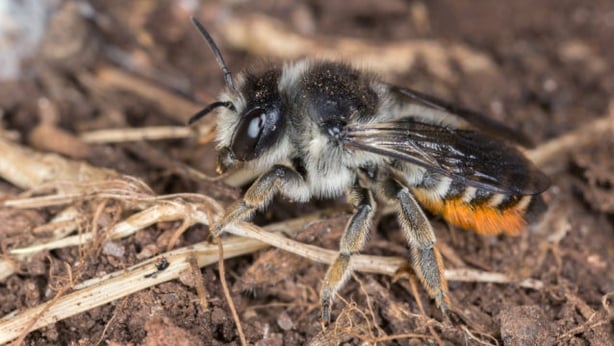
Bradbury has been making bee hotels for seven years and, to date, has attracted three solitary bee species to these home-made shelters. In her latest book, Wildlife Gardening: For Everyone And Everything, she explains: "A bee hotel is simply a container filled with different-sized hollow tubes, such as cut lengths of bamboo.
"A female bee will select a tube, lay a single egg inside at the far end, and leave it with a little cake of nectar and pollen. Then she’ll seal the cell and build another cell, laying an egg and provisioning it with nectar and pollen. She will keep doing this until the whole tube is filled.
"As such, a bee hotel will have several rows of eggs laid in single cells. Once hatched, the grubs will eat their store of pollen and nectar, pupate into an adult bee and then overwinter, ready to hatch out in spring."
Fancy giving it a go building your own bee hotel? Follow Bradbury’s guide…
1. Choose your materials
Bee hotels can be made using a variety of materials, including blocks of untreated wood with holes drilled in, bundles of bamboo canes, old plant stems or rolls of cardboard lined with paper, etc. They need to be a depth of around 16cm, with diameters ranging from 7-12mm.
For this simple bee hotel, you’ll need: A plank of untreated wood with a width of 12cm and a length of no less than 125cm; a drill and drill bits; self-tapping wood screws
You can use bamboo canes (you can cut them yourself or buy them pre-cut) or bespoke bee tubes from a specialist supplier. When each tube fills up, you can remove it and pop it in your shed, to prevent a build-up of parasites. The bee tubes here comprise an external reusable tube and an inner lining.
The advantage of using these over bamboo canes is that in autumn, you remove the reusable external tube and then soak the inner lining in water to release the cocoons. You then leave these to dry before popping them in a matchbox or similar and storing them somewhere cool and dry (such as your shed) for winter.
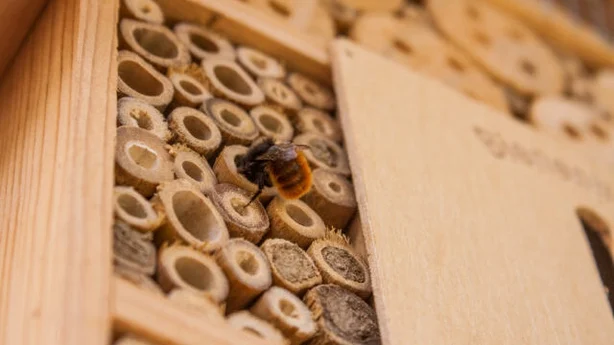
2. Check conditions are right
Bee hotels need to be dry, as damp conditions can bring on fungal diseases. They need to have the correct diameter of nest holes, as some species are fussy. Generally, aim for holes with different diameters between 2-12mm (8–10mm is ideal for red mason bees, 7–8mm for blue mason bees, and 10–12mm for leafcutters). Most importantly, they need to be as unwelcoming to predators as any nest site in the wild, so holes can’t be too wide and you need to use the right materials.
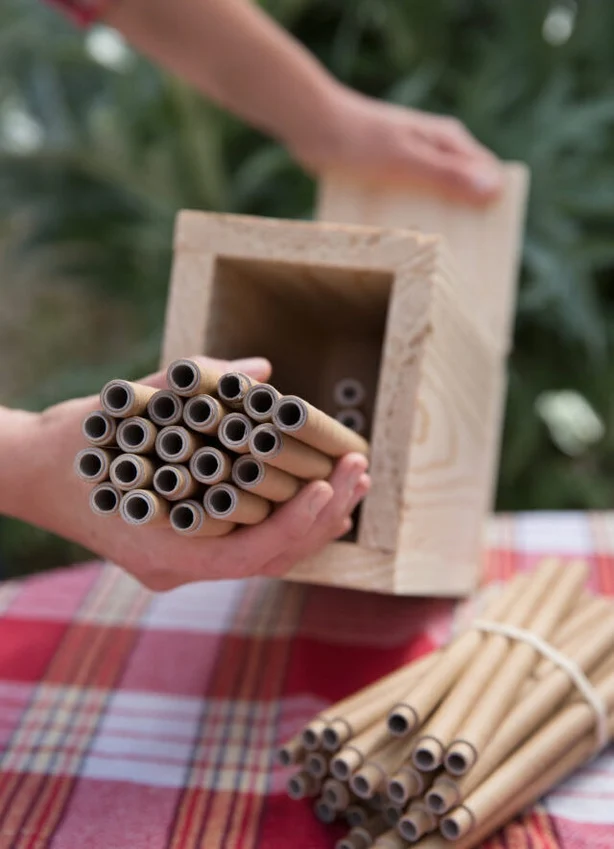
3. Get drilling
Cut the plank into five lengths of 25cm and piece them together using the drill and screws to make an open-fronted box with a long back panel. Drill a hole in the long back panel so you can fix it to a wall.
Sand off any rough edges and place the tubes or bamboo canes in the box. (If using bee tubes, make sure the tube lining is flush with the external tube at the front, with the liner protruding from the tube at the back.)
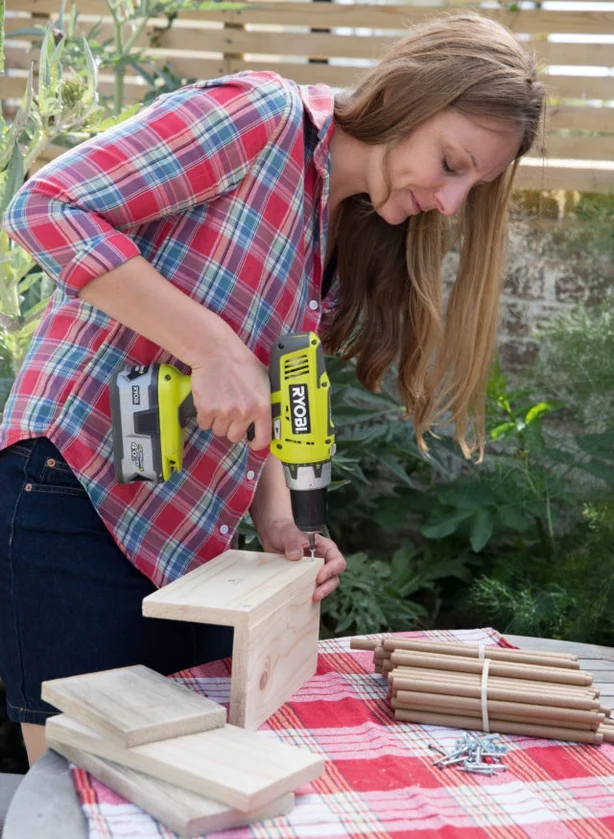
4. Hang it up
Fix the hotel to a South or East-facing wall or fence, so it gets plenty of morning sun, around 1.5m off the ground. Make sure the tubes are pushed back against the back of the hotel so they are protected by the box from wind and rain.

5. Look after your hotel
Once in place, you’ll need to think about how you’re going to look after your bee hotel – there is a possibility that it’ll encourage predators, parasites and diseases, if you just put it up then leave it. Studies have shown that bee hotels can have high levels of parasitism and disease, and this may actually decrease local solitary bee populations rather than increase them, although further research is required to determine the true effects.
Take the bee hotel down in October, brush off any cobwebs and pop it in your shed, which should remain cool and dry throughout winter (don’t bring the hotel into your warm home – it needs to be kept cool). This will stop predators such as tits and woodpeckers from attacking and eating the bees.
Do remember to put the hotel back out in spring. Aim to replace the container or its nest holes (bamboo, etc) at least every two years to prevent parasite numbers building up.
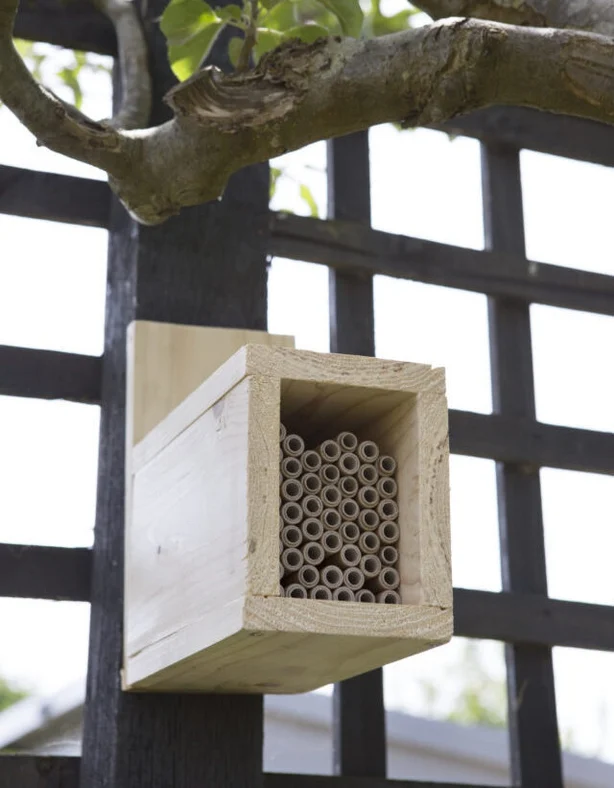
Wildlife Gardening: For Everyone And Everything by Kate Bradbury is published by Bloomsbury Wildlife.
Disclaimer: The copyright of this article belongs to the original author. Reposting this article is solely for the purpose of information dissemination and does not constitute any investment advice. If there is any infringement, please contact us immediately. We will make corrections or deletions as necessary. Thank you.






